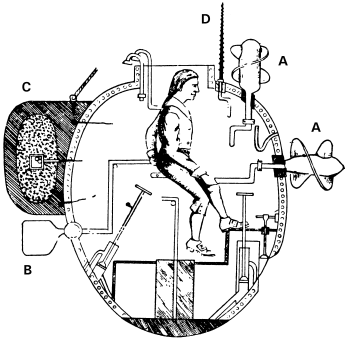| Fasttrack
to America's Past Teacher Key |
|
| Fasttrack
to America's Past Teacher Key |
|
 Page 77 |
Page 77 - A
Revolutionary Defense Background As the text on the page says, the Turtle was the world's first combat submarine. It was built by a Connecticut man in 1776, and was sent against a British warship in the harbor of New York City. The submarine reached the ship, but the drill bit could not penetrate a copper plate attached to the wooden hull of the British warship. As a result, the torpedo could not be attached. While the attempt was a failure, the Turtle certainly demonstrated the inventive spirit that Americans were already becoming famous for. Modern torpedoes are self-propelled, of course, and are fired by submarines from a distance. The torpedoes explode when they hit the target ship. Students should read the information on the page, study the drawing, and label the parts of the submarine. Remind students that there are articles with more information about the Turtle online. Discuss with students what would be good search phrases to use to find them. The labels  A - Propellers B - Rudder C - Torpedo (A rope connects the torpedo to the drill bit.) D - Drill bit (It is cranked into a ship's wooden hull. The drill bit and the torpedo detach when the submarine pulls away.) |
|
Copyright Notice
Copyright 2018 by David Burns. All rights reserved. Illustrations and reading selections appearing in this work are taken from sources in the public domain and from private collections used by permission. Sources include: the Dover Pictorial Archive, the Library of Congress, The National Archives, The Hart Publishing Co., Corel Corporation and its licensors, Nova Development Corporation and its licensors, and others. Maps were created or adapted by the author using reference maps from the United States Geological Survey and Cartesia Software. Please see the home page for this title for more information. |